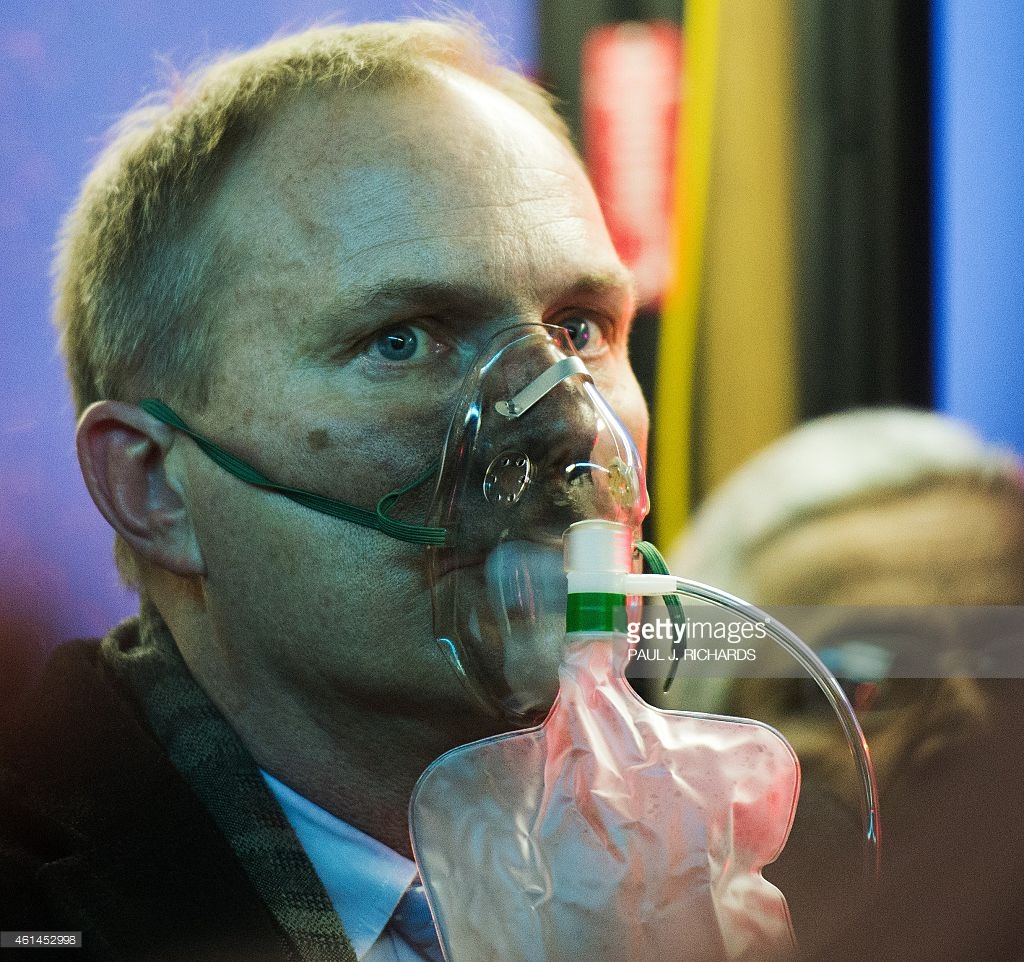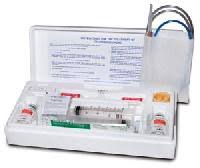1) Name the active ingredient in the Cyanokit. The Cyanokit contains hydroxocobalamin (HCN), which is essentially Vitamin B12 + an extra hydroxyl group. It is one of two main antidote kits in circulation for treatment of cyanide poisoning. The other most commonly distributed kit is aptly named the Cyanide Antidote Kit. It contains amyl nitrite and sodium thiosulfate.
2) Why does this matter?
One of these two kits is contraindicated in patients with cyanide poisoning in whom there is a concomitant concern for carbon monoxide poisoning (ie: patients involved in home/commercial fires or smoke inhalation victims-- the most common presentation for cyanide toxicity).

And why is this so? These two kits contain two completely different active compounds that work to clear cyanide by two completely different mechanisms.
Cyanokit: Cyanide displaces the extra hydroxyl group on B12 to form cyanocobalamin, which is excreted by the kidneys.
Cyanide Antidote Kit: sodium nitrite (or any other kit utilizing nitrites) reacts with hemoglobin to form methemoglobin (met-hgb). Cyanide, which throws a wrench in oxidative metabolism by binding with cytochrome oxidase via the electron transport chain, preferentially binds to Met-Hgb over cytochrome oxidase.
Stay with me, people, we’re almost done…. We know that Met-Hgb shifts the oxygen dissociation curve to the left, causing decreased oxygen delivery to the tissues. And increased tissue hypoxia via the production of Met-Hgb compounded by carbon monoxide -induced tissue hypoxia = BAD.

3) Quick! How is the Cyanokit administered?
Each kit contains a vial with 5 g of hydroxocobalamin in powdered form, IV tubing, transfer spike and instruction card. You will need to grab a bag of 0.9% normal saline.
Inject 200ml of NS into the vial. Rock (do not shake) the vial back and forth for 60 seconds to mix. Hang and infuse over 15 minutes. The standard 5 g dose should be sufficient without needing to re-dose.
Don’t forget to draw labs BEFORE starting the infusion, since hydroxocobalamin will interfere with the results of labs that rely on the use of colorimetric probes, which includes your carboxyhemoglobin level, as well as lactate and certain LFTs.
Want to learn more?
https://lifeinthefastlane.com/tox-library/toxicant/inhalation/cyanide/
https://emcrit.org/racc/cardiac-arrest-after-smoke-inhalation/
SaveSave


 Nyquil, Tylenol, and Benadryl) are heavily regulated by the Food & Drug Administration (FDA). This regulation generally scrutinizes the benefits/harms the drug had in clinical trials and the manufacturing process, including raw ingredient inspections. Unfortunately, this same oversight doesn’t apply to natural products such as vitamins, minerals, and herbal supplements. There is less scrutiny on manufacturers which may increase the risk of impurities and contamination. This is why it’s always important to pick a “major/recognizable” natural product brands instead of “no-name” generic brands. Natural products are not legally considered “drugs”; instead they’re considered “dietary supplements.” The Dietary Supplement Health and Education Act of 1994 (DSHEA 1994) prevents natural products from making any health claims, but they are permitted to use phrases such as “supports heart and energy function.” Many of these supplements have the same side effects and drug interactions as prescription medications (since many are derived from the same source), but they can be purchased by anyone without healthcare provider oversight. Nonetheless, there is great potential for these products if they’re utilized under proper medical supervision. Let us take a look at three agents that “support heart health.”
Nyquil, Tylenol, and Benadryl) are heavily regulated by the Food & Drug Administration (FDA). This regulation generally scrutinizes the benefits/harms the drug had in clinical trials and the manufacturing process, including raw ingredient inspections. Unfortunately, this same oversight doesn’t apply to natural products such as vitamins, minerals, and herbal supplements. There is less scrutiny on manufacturers which may increase the risk of impurities and contamination. This is why it’s always important to pick a “major/recognizable” natural product brands instead of “no-name” generic brands. Natural products are not legally considered “drugs”; instead they’re considered “dietary supplements.” The Dietary Supplement Health and Education Act of 1994 (DSHEA 1994) prevents natural products from making any health claims, but they are permitted to use phrases such as “supports heart and energy function.” Many of these supplements have the same side effects and drug interactions as prescription medications (since many are derived from the same source), but they can be purchased by anyone without healthcare provider oversight. Nonetheless, there is great potential for these products if they’re utilized under proper medical supervision. Let us take a look at three agents that “support heart health.”


